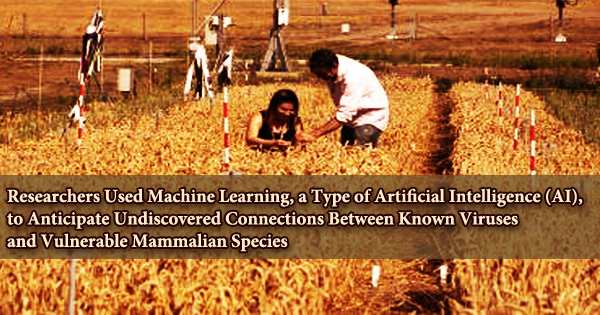A new University of Liverpool research might aid scientists in preventing the spread of current viruses that cause zoonotic and animal illnesses in the future. Researchers utilized machine-learning, a type of artificial intelligence (AI), to predict more than 20,000 previously unknown connections between known viruses and vulnerable mammalian species.
The results, which were published in Nature Communications, might help disease surveillance programs be more targeted. There are thousands of viruses that infect mammals, yet recent estimates suggest that only around 1% of mammalian viral variety has been identified. Human and feline immunodeficiency viruses have a fairly limited host range, but rabies and West Nile viruses have a very broad host range.
“The host range of a virus is a key indicator of whether it is zoonotic and hence poses a risk to people. SARS-CoV-2 has recently been discovered to have a broad host range, which may have aided its spread to humans. However, our knowledge of the host range of most viruses remains limited,” says lead researcher Dr. Maya Wardeh of the University’s Institute of Infection, Veterinary, and Ecological Sciences.
To close this information gap, the researchers created a unique machine learning framework that combines three separate perspectives: each virus, each mammal, and the network linking them, to anticipate undiscovered connections between known viruses and vulnerable mammalian species.
According to their findings, there are more than five times as many links between known zoonotic viruses and wild and semi-domesticated animals than previously assumed. Bats and rodents, which have been connected to recent outbreaks of emerging viruses including coronaviruses and hantaviruses, were shown to be associated with a higher risk of zoonotic viruses.
A five-fold rise in connections between wild and semi-domesticated animals and viruses of economically significant domestic species such as cattle and pets is also predicted by the model.
Dr. Wardeh said: “As viruses continue to move across the globe, our model provides a powerful way to assess potential hosts they have yet to encounter. This foresight might aid in identifying and mitigating zoonotic and animal-disease hazards, such as disease spread from animal reservoirs to human populations.”
Dr. Wardeh is presently developing a method to forecast the capacity of ticks and insects to transfer viruses to birds and mammals, which will allow laboratory-based vector-competence research to be prioritized throughout the world to help reduce future outbreaks of vector-borne illnesses.
















